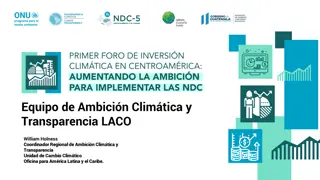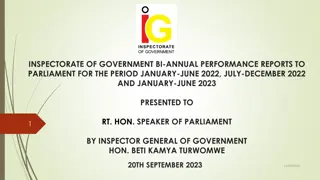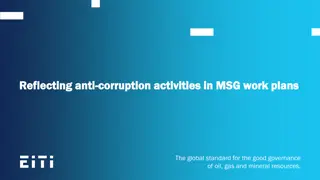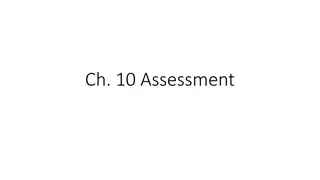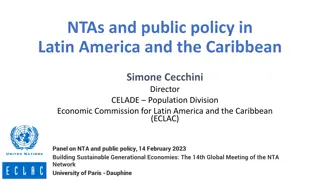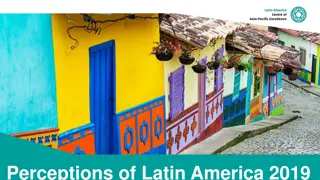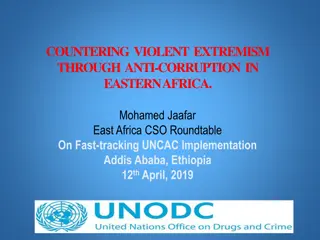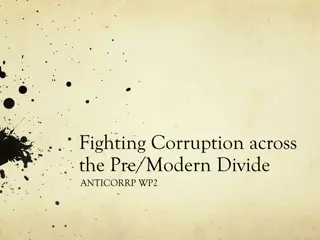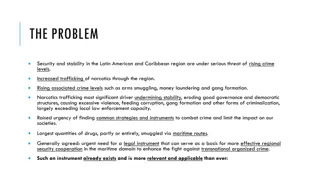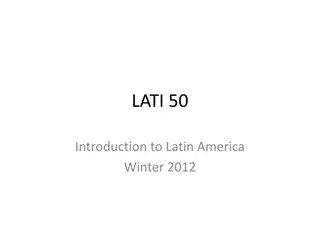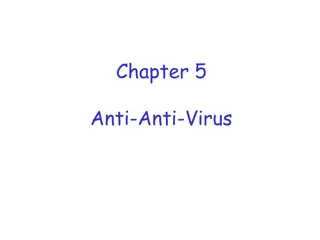Corruption and Anti-Corruption Measures in Latin America and the Caribbean
This research delves into the issue of corruption at the sub-national level in Latin America and the Caribbean, particularly focusing on the forest sector and the REDD+ program. It examines the vulnerable areas, corrupt practices, and lessons learned from case studies in Brazil and Bolivia. The study also provides recommendations to combat corruption and improve governance in the region.
Download Presentation

Please find below an Image/Link to download the presentation.
The content on the website is provided AS IS for your information and personal use only. It may not be sold, licensed, or shared on other websites without obtaining consent from the author. Download presentation by click this link. If you encounter any issues during the download, it is possible that the publisher has removed the file from their server.
E N D
Presentation Transcript
Local Governance Anti-Corruption & REDD in Latin America and the Caribbean
Objectives How LAC countries tackle corruption at the sub- national level Extract lessons learned from the case studies How best practices can be applied in the REDD+ context
Corruption at the Sub- National Level Vulnerability Corrupt Practices Dispersed control over finances Fraud via embezzling or skimming Freedom to hire and fire Cronyism,clientelism or nepotism Proximity with constituency Bribery, fraud Patronage Networks State capture, bribery, fraud Lack of capacity and oversight Petty corruption
Structure Corruption in the Forest Sector and REDD+ Lessons Learned from Case Studies: Brazil & Bolivia Recommendations
Corruption in the Forest Sector Harvest/processing (e.g. illegal logging) Transport (e.g. timber/wood products without permits) Trade (e.g. avoidance of taxes/forest charges)
Corruption in the Forest Sector Stage Corrupt Practices Regulatory Design Undue influence on forest laws and regulations Harvest/Processing Bribery of local officials to harvest without permits, obtain logging permits, ignore over- harvesting Transport Bribery to allow transport of illegally logged timber Trade Bribery to export wood products without permits, avoid taxes, money laundry
Corruption & REDD REDD+ design & implementation Land administration Carbon Rights & Measurement Benefit & Distribution Systems
Corruption & REDD+ REDD+ Design Land Administration Bribery to ensure that land areas are allocated to or excluded from REDD+ Failure to recognize competing rights or customary land tenure Link carbon rights to State ownership of forests Artificially inflate baselines State capture, nepotism& cronyism Carbon Rights & Measurement Benefit & Distribution Systems
Corruption & REDD+ REDD+ Implementation Land Administration Bribery to fraudulently create land titles Bribery to include land areas in REDD+ Bribery to register carbon rights over particular lands in the name of corrupt actors Carbon Rights & Measurement Over-estimate the amount of emission reductions to inflate REDD+ revenues Sell the carbon rights without the consent of the indigenous people Benefit & Distribution Systems
Structure Corruption in the Forest Sector and REDD+ Lessons Learned from Case Studies: Brazil& Bolivia Recommendations
Anti-Corruption Measures BolsaFloresta External Audits: PricewaterhouseCoopers Portal daTranspar ncia (Decree 3195/2011)
Structure Corruption in the Forest Sector and REDD+ Lessons Learned from Case Studies: Brazil &Bolivia Recommendations
Decentralization Popular Participation Law (1551/1994) Administrative Decentralization Law (1654/1995) Forest Law (1700/1996)
Anti-Corruption Measures Single concession fee US$ 1 per hectare Transparency & independence of ABT Forest Monitoring
Anti-Corruption Laws Anti-corruption Law 004/2007 Decree 28168/2005 access to information & transparency Ministry against corruption
Lessons Learned Good practices are instrumental in preventing corruption Specific anti-corruption laws and bodies are less common at the sub-national level Local bodies in charge of environmental control have a role in suppressing corruption Local & indigenous communities participate more actively in forest administration
Structure Corruption in the Forest Sector and REDD+ Lessons Learned from Case Studies: Brazil & Bolivia Recommendations
Key Recommendations Sub-National Governance Awareness & understanding about REDD+ and related corruption risks Policy dialogue on financial resources for climate change, forest management and REDD+ Capacity building for local decision makers and civil society Accountability and transparency in decision-making
Key Recommendations REDD+ Design Phase REDD-specific anti-corruption risks Local governance institutions REDD specific anti-corruption measures Anti-corruption proposals in National Strategies
Key Recommendations REDD Implementation Local governance institutions to detect and suppress corruption Local and indigenous communities and civil society Transparency in decisions on resource use and distribution, as well as climate change, forest management and REDD+ policies Use of UNCAC and IACAC as guide to develop anti- corruption frameworks
Anti-Corruption Checklist 1. Identify Corruption Risks What are potential REDD-specific corruption risks? What are the sectors involved?
Anti-Corruption Checklist 2. Design Anti-Corruption Measures What measures are required? Which institutions could carry out such measures? What is the role/functions of those institutions? What will be the relationship between national and local governance institutions? How existing laws, policies and mechanisms could be used? How could civil society, local and indigenous populations be involved? Are the designed anti-corruption measures too complex or costly? How to finance those measures?
Anti-Corruption Checklist 3. Implement Anti-Corruption Measures How to ensure compliance with anti-corruption measures? How to evaluate whether anti-corruption measures are effective? Can the effectiveness of such measures be assessed through the IACAC Follow- up Mechanism? How to report/inform the public about the measures taken?
Thank you Contact Information Beatriz Garcia, Ph.D. REDD Forests beatriz@reddforests.com www.reddforests.com






